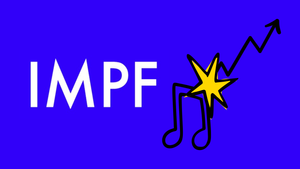According to calculations by global independent music publisher trade group IMPF, indie music publishing revenues for the period covered by its latest set of data grew by 5.7% to €2.57 billion, despite the total market share of the indies dropping slightly as the ‘big five’ players who dominate music publishing continue to buy up catalogue.
It’s worth noting that, unlike a lot of the other music industry stats that come out at this time of year - which relate to 2024 - that ‘latest set of data’ from IMPF relates to 2023. This is because of the complexity of the music publishing ecosystem and the time it takes for all revenue and data for a particular period to work its way through the system.
IMPF defines an indie publisher as any music publishing company with less than 5% market share. That excludes the three majors - the publishing companies run by Sony, Universal and Warner - which together command 60.6% market share, plus BMG and Kobalt, which together have a 13.1% share.
The market share of the indies in 2023, at 26.3%, is down slightly on 2022, when it was 26.7%. Although the indie sector combined still has a bigger market share than the biggest of the major publishers, Sony Music Publishing.
IMPF President Annette Barrett says her organisation’s latest ‘Global Market View’ report “reveals continued growth in the value of independent music publishing worldwide, and that our combined market share remains greater than that of the largest major corporate organisation”.
“This demonstrates the enduring influence and importance of independent music publishers”, she adds, as well as “their songwriters and their repertoire around the world, and the value they deliver on both a local and international level”.
The reason that IMPF’s report has a one year lagis that it aggregates figures from various other reports that need to be published first, before focusing in on the indies’ market share.
Most income on the songs side of the music industry flows through the collective licensing system and is therefore captured in the ‘Global Collections Report’ published each autumn by CISAC, the global organisation for songwriter collecting societies.
However, not all income flows through the societies, with some going directly to the publishers. That includes revenues from sync deals and sheet music plus, especially with Anglo-American repertoire, a decent portion of digital income. To properly account those revenues, IMPF also includes data from reports compiled by Omdia’s Music & Copyright and by economist Will Page alongside the CISAC data, in a bid to get a full sector picture.
IMPF concludes that, in 2023, total revenues “accrued to music publishers and songwriters accounted for a total of €15.8 billion in 2023, with revenues from the network of collecting societies at €11.91 billion and direct licensing revenue at €3.88 billion”.
It also adds that, when it comes to market share, “independent music publishers have been affected by an increasing consolidation of the global music publishing market, which mirrors a similar situation in the recorded music side of the business. Catalogues that were previously independently managed have been changing ownership and acquired by majors, BMG or Kobalt. This trend is expected to continue”.
Universal’s big Downtown deal is part of that continuing trend. Although a lot of the attention around Universal’s bid to buy the Downtown group has focused on the impact on the recorded music side via control of the FUGA distribution business, Downtown also has a big rights administration operation on the publishing side, including via Songtrust.
When the Downtown acquisition was announced last year, IMPF said in a statement, “While independent music publishing continues to grow in value internationally, should this sale go ahead, it will mean further market concentration, which in turn will damage the diversity of the music industry ecosystem, harm competition and ultimately reduce choice for songwriters and publishers alike”.

